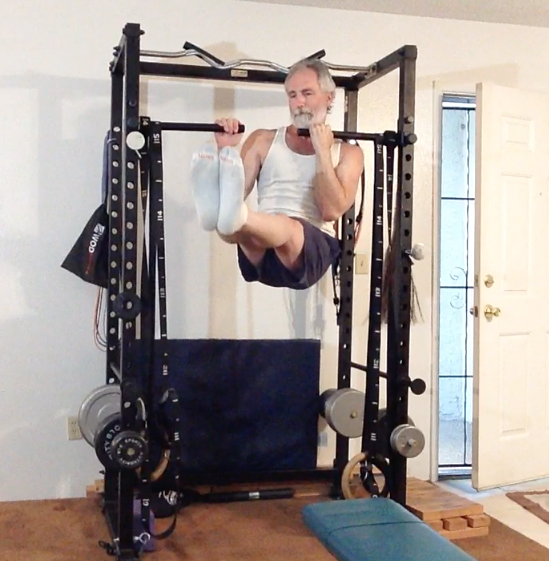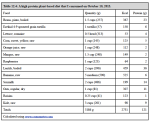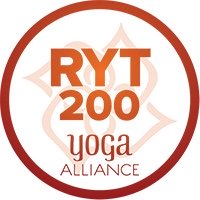Optimal Training Frequency
What’s the ideal/optimal training frequency for gaining strength and muscle mass?
It depends. Optimal training frequency for any individual is dependent on training intensity and recovery ability. Recovery ability varies from person to person, and also from time to time for the same person, depending on other demands on your energy, as well as your chronological age and training age.
Training Intensity and Training Frequency
The more effort you apply in each training session, the less frequently you can train. If you train to momentary muscular failure, you need more recovery than if you train short of failure. Therefore if you train to failure, you must train less frequently than if you avoid failure.
As you become more skilled at proper training technique and advanced in strength and size, you place more demands on your physiology in each training session, and this also increases the amount of time required for recovery.
Since evidence indicates that performing sets to momentary muscular failure may produce greater gains in strength and hypertrophy than performing sets short of failure1, 2, it is generally best to perform sets to momentary muscular failure, and adjust training frequency to your recovery ability.
Daily Life Demands and Training Frequency
|
When you have more total demands on your energy from work, family, recreational activities, or sports for example, you have less available for recovery from hard resistance training. Age and Training FrequencyAs you grow older, your recovery ability generally declines, so you will need more recovery time between training sessions. |
 |
As you increase in training age (number of years you have been training), you will be closer to realizing your full potential and you may need a lower training frequency.
Training Productivity and Training Frequency
The majority of resistance training induced muscular hypertrophy appears to occur with just one training session weekly.3 Although a slightly increased frequency (up to thrice weekly) may increase hypertrophy for some people, each additional training session provides diminishing returns.4
One study found that elder adults obtained virtually identical strength gains over 24 weeks whether they trained once, twice, or thrice weekly (each group had strength gains of 37%, 42%, and 40% respectively).5 Those who trained 2-3 times weekly did 2-3 times as much work and spent 2-3 times as much time training, and rather than getting 2-3 times the results, their results did not statistically or practically differ from those who trained only once weekly.
Therefore, once past the beginner stage, few if any people benefit from training every muscle group (i.e. the whole body) thrice weekly. For most people, it is sufficient to train each muscle group only 1-2 times weekly for either strength or mass gains.1, 2
Time Course of Recovery and Training Frequency
The optimal training frequency depends on the time course of recovery and growth.
A study of the time course of recovery from full body training routines incorporating both MJ and SJ exercises (10 total) found that 48 hours after a single session of training to momentary muscular failure, 70% of experienced young male recreational lifters could replicate their MJ exercise performance of the first session (within 1 repetition), and 80% could replicate their SJ exercise performance.6
Two things to note. First, mere replication of a previous training session only signifies recovery, not progressive adaptation. The goal of training (as opposed to exercise) is to progressively improve in strength or muscle mass. We don’t want to merely replicate what we did in the previous session, we want to improve upon it. When recovery was defined as matching or exceeding baseline performance, only 60% of young males were recovered at 48 hours.7
This means at least 40% of young males in this study needed more than 48 hours to recover from a training session. Practically speaking, this means they needed at least 72 hours (3 days) to recover from a single set to failure of 10 different exercises. That would mean they could not recover and profit from more than 2 training sessions for each exercise each week.
If you are not a young male you will not have the recovery ability of a young male. Therefore you will very likely need at least 72 hours just to recover from session to session. You may need even more time to go beyond mere recovery to the goal of gaining strength and mass.
Recovering ≠ Progressing
Let me clarify recovery versus progressing.
To recover simply means to get back something that was lost. To progress means to go beyond recovery into new territory by gaining strength and muscle mass.
In a strength training session you lose strength as a result of the effort expended. You are recovered when you have regained the strength lost in the training session.
Mere recovery is not gaining strength. To gain strength you need to allow more time than required for mere recovery.
For example, let’s say that in one training session you perform a set of 12 front squats to momentary failure with the X3 bar and black band. Now you wait 48 hours and find that you are only able to do 11 repetitions with the black band. You wait another 48 hours and you are still unable to do more than 11 repetitions – now you have difficulty even getting 11 and fail at 10. You wait another 48 hours and again you are still unable to get more than 11 repetitions – at this point you get only 9 or 10. After 2-3 attempts at this frequency, you can conclude that you can't recover your strength with only 48 hours , and you need more than 48 hours just to recover.
So now you wait 72 hours for your next session. You now find you can repeat the set of 12 repetitions, but no more than that. This shows that you need 72 hours to recover your strength. However, since you were not able to improve your performance, you didn’t gain strength nor mass.
So now you wait 96 hours (4 days) until you again attempt to surpass the 12 repetition performance. Now you find that you can perform 14 repetitions! You have now found the frequency that, at least for the time being, allows you to both recover and gain of strength.
Bear in mind that this principle applies regardless of whether you train with the X3 Bar, barbells, machines, or bodyweight only!
Find Your Own Training Frequency Sweet Spot
From the research cited above, we can surmise that most people will benefit from at least 72 hours (3 days) between training sessions, and the optimal training frequency for a novice will therefore be twice weekly for each movement/muscle group.
That could be two full body sessions, for example on Monday and Thursday, or four sessions using an upper/lower split routine, such as lower body on Monday and Thursday, and upper body on Tuesday and Friday, such as the basic Gaining Strength program, allows 3-4 days (72-96 hours) for recovery and adaptation between sessions.
Continue to train twice weekly so long as you continue to progress in strength. When you plateau – marked by a failure to progress in strength for 3 consecutive training sessions – you may need to adjust your training frequency to incorporate more recovery time.
Increase your rest days incrementally until you start progressing again. Go from training each muscle group once every 3-4 days to once every 4-5 days.
For example, at time of writing this, I use an upper/lower split routine variation of the basic Gaining Strength program, and train thrice weekly. As a result, I train each muscle group once every 4-5 days (96-120 hours).
If/when you find another plateau, reduce your frequency from once every 4-5 days to once every 5-6 days, or once every 7 days. That can be a full body session once weekly, or a split into upper/lower or push/pull/legs, each split session performed only once weekly.
Summary
You can determine your own optimal training frequency using the method described above. Keep good records of your training performances. If you consistently progress in strength from week to week, you have found your optimal training frequency for the time being. When you stop gaining strength and mass, and reach a plateau, you know you are only recovering and not allowing your body enough time between training sessions for gaining strength and mass. If you regress, you aren’t even recovering. Extend your rest days one by one until you are once again gaining strength and mass, which will signal that you have found a new optimal training frequency.
If you have any trouble finding your sweet spot, or just need someone to hold you accountable so you stick with a proper program long enough to get awesome results, maybe you will benefit from some one-on-one coaching.
Notes
1. Fisher et al. Evidence-based resistance training recommendations. Med Sport 2011;15(3):147-162.
2. Fisher et al. Evidence-based resistance training recommendations for muscular hypertrophy. Med Sport 2013;17(4):217-235.
3. Morton RW, Colenso-Semple L, Phillips SM. Training for Strength and Hypertrophy: An Evidence-based Approach. Curr Opin Physiol 2019, 10:xx-xy. https://doi.org/10.1016/j.cophys.2019.04.006
4. Ibid.
5. Taaffe, D., Duret, C., Wheeler, S., & Marcus, R. (1999). Once‐Weekly Resistance Exercise Improves Muscle Strength and Neuromuscular Performance in Older Adults. Journal of American Geriatrics Society, 47(10), 1208-1214.
6. Korack JA, Green JM, O’Neal EK. Resistance Training Recovery: Considerations for Single vs Multi-joint Movements and Upper vs Lower Body Muscles. Int J Exer Sci 2015;8(1):85-96. Table 3.
7. Ibid, page 91.
Recent Articles
-
Ancient Roman Soldier Diet
Apr 14, 25 05:19 PM
A discussion of the ancient Roman soldier diet, its staple foods and nutritional value, and a vegan minimalist version. -
High Protein Chocolate Tofu Pudding
Jul 01, 24 12:41 PM
A delicious high protein chocolate tofu pudding. -
Vegan Macrobiotic Diet For Psoriasis
Sep 05, 23 06:36 PM
Vegan macrobiotic diet for psoriasis. My progress healing psoriasis with a vegan macrobiotic diet. -
How Every Disease Develops
Aug 04, 23 06:22 PM
How every disease develops over time, according to macrobiotic medicine. -
Why Do People Quit Being Vegan?
Jun 28, 23 08:04 PM
Why do people quit being vegan? How peer pressure and ego conspire against vegans. -
Powered By Plants
Mar 16, 23 08:01 PM
Powered By Plants is a book in which I have presented a lot of scientific evidence that humans are designed by Nature for a whole foods plant-based diet. -
Carnism Versus Libertarianism
Dec 30, 22 01:55 PM
Carnism Versus Libertarianism is an e-book demonstrating that carnism is in principle incompatible with libertarianism, voluntaryism, and anarchism. -
The Most Dangerous Superstition Book Review
Nov 15, 22 08:46 PM
Review of the book The Most Dangerous Superstition by Larken Rose.











